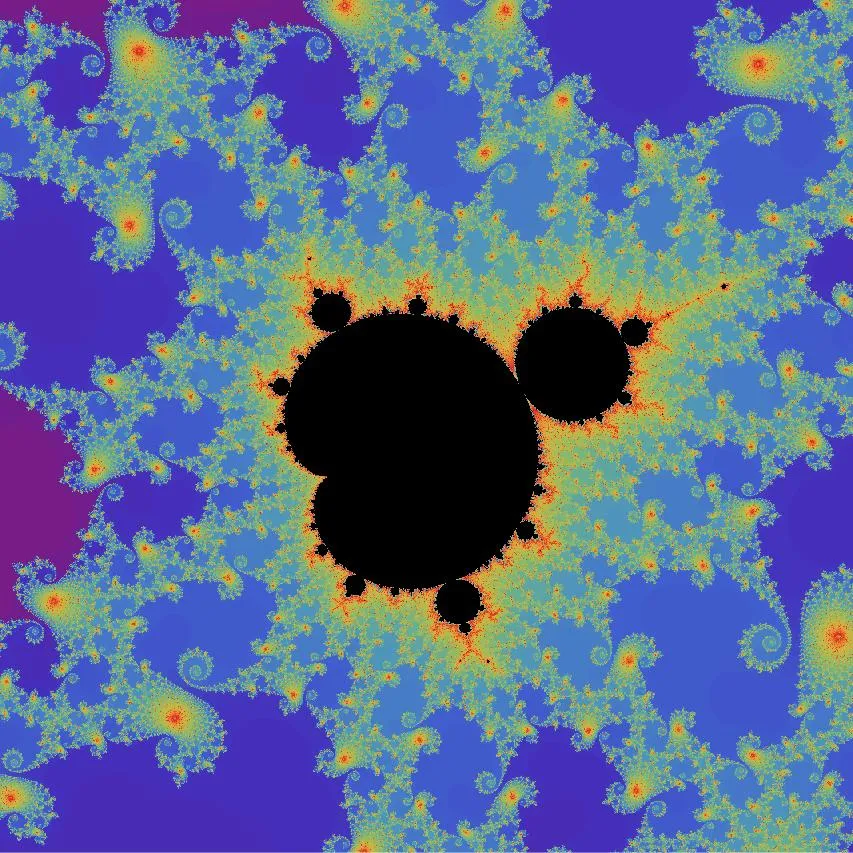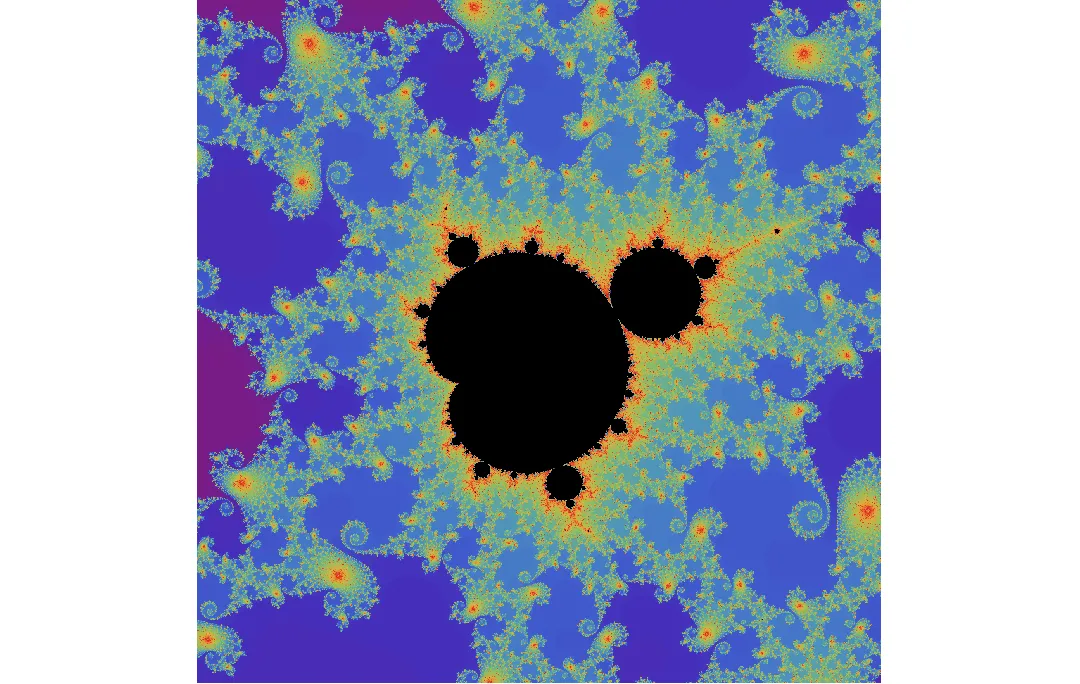我使用GCC和Clang的向量扩展,将OP的代码向量化。在展示如何进行向量化之前,让我先展示以下硬件的性能:
Skylake (SKL) at 3.1 GHz with 4 cores
Knights Landing (KNL) at 1.5 GHz with 68 cores
ARMv8 Cortex-A57 arch64 (Nvidia Jetson TX1) 4 cores at ? GHz
nb_iter = 1000000
GCC Clang
SKL_scalar 6m5,422s
SKL_SSE41 3m18,058s
SKL_AVX2 1m37,843s 1m39,943s
SKL_scalar_omp 0m52,237s
SKL_SSE41_omp 0m29,624s 0m31,356s
SKL_AVX2_omp 0m14,156s 0m16,783s
ARM_scalar 15m28.285s
ARM_vector 9m26.384s
ARM_scalar_omp 3m54.242s
ARM_vector_omp 2m21.780s
KNL_scalar 19m34.121s
KNL_SSE41 11m30.280s
KNL_AVX2 5m0.005s 6m39.568s
KNL_AVX512 2m40.934s 6m20.061s
KNL_scalar_omp 0m9.108s
KNL_SSE41_omp 0m6.666s 0m6.992s
KNL_AVX2_omp 0m2.973s 0m3.988s
KNL_AVX512_omp 0m1.761s 0m3.335s
KNL相对于SKL的理论加速比为
(68 cores/4 cores)*(1.5 GHz/3.1 Ghz)*
(8 doubles per lane/4 doubles per lane) = 16.45
我详细介绍了GCC和Clang的向量扩展功能
在这里。为了将OP的代码向量化,我们需要定义三个额外的向量操作。
1. 广播
对于向量
v和标量
s,GCC无法执行
v = s,但Clang可以。但我发现了一种不错的解决方案,适用于GCC和Clang
在这里。例如:
vsi v = s - (vsi){}
2. 一个类似于OpenCL中的any()函数或者像R中的。
我想到的最好的方式是创建一个通用函数。
static bool any(vli const & x) {
for(int i=0; i<VLI_SIZE; i++) if(x[i]) return true;
return false;
}
Clang实际上使用
ptest指令为此生成相对
高效的代码(但
不适用于AVX512),但GCC则不是这样。
3. 压缩
计算使用64位双精度浮点数完成,但结果会写成32位整数。因此,使用64位整数进行了两次计算,然后将这两个计算压缩成一个32位整数向量。我想出了一种通用解决方案,Clang做得很好。
static vsi compress(vli const & lo, vli const & hi) {
vsi lo2 = (vsi)lo, hi2 = (vsi)hi, z;
for(int i=0; i<VLI_SIZE; i++) z[i+0*VLI_SIZE] = lo2[2*i];
for(int i=0; i<VLI_SIZE; i++) z[i+1*VLI_SIZE] = hi2[2*i];
return z;
}
以下解决方案在GCC上效果更好,但对于Clang来说并没有改善。但由于此函数不是关键性的,我只使用通用版本。
static vsi compress(vli const & low, vli const & high) {
#if defined(__clang__)
return __builtin_shufflevector((vsi)low, (vsi)high, MASK);
#else
return __builtin_shuffle((vsi)low, (vsi)high, (vsi){MASK});
#endif
}
这些定义不依赖于任何x86特定的内容,下面定义的代码也可以在ARM处理器上使用GCC和Clang编译。
现在这些已经定义好了,下面是代码。
#include <string.h>
#include <inttypes.h>
#include <Rcpp.h>
using namespace Rcpp;
#ifdef _OPENMP
#include <omp.h>
#endif
#if defined ( __AVX512F__ ) || defined ( __AVX512__ )
static const int SIMD_SIZE = 64;
#elif defined ( __AVX2__ )
static const int SIMD_SIZE = 32;
#else
static const int SIMD_SIZE = 16;
#endif
static const int VSI_SIZE = SIMD_SIZE/sizeof(int32_t);
static const int VLI_SIZE = SIMD_SIZE/sizeof(int64_t);
static const int VDF_SIZE = SIMD_SIZE/sizeof(double);
#if defined(__clang__)
typedef int32_t vsi __attribute__ ((ext_vector_type(VSI_SIZE)));
typedef int64_t vli __attribute__ ((ext_vector_type(VLI_SIZE)));
typedef double vdf __attribute__ ((ext_vector_type(VDF_SIZE)));
#else
typedef int32_t vsi __attribute__ ((vector_size (SIMD_SIZE)));
typedef int64_t vli __attribute__ ((vector_size (SIMD_SIZE)));
typedef double vdf __attribute__ ((vector_size (SIMD_SIZE)));
#endif
static bool any(vli const & x) {
for(int i=0; i<VLI_SIZE; i++) if(x[i]) return true;
return false;
}
static vsi compress(vli const & lo, vli const & hi) {
vsi lo2 = (vsi)lo, hi2 = (vsi)hi, z;
for(int i=0; i<VLI_SIZE; i++) z[i+0*VLI_SIZE] = lo2[2*i];
for(int i=0; i<VLI_SIZE; i++) z[i+1*VLI_SIZE] = hi2[2*i];
return z;
}
IntegerVector frac(double x_min, double x_max, double y_min, double y_max, int res_x, int res_y, int nb_iter) {
IntegerVector out(res_x*res_y);
vdf x_minv = x_min - (vdf){}, y_minv = y_min - (vdf){};
vdf x_stepv = (x_max - x_min)/res_x - (vdf){}, y_stepv = (y_max - y_min)/res_y - (vdf){};
double a[VDF_SIZE] __attribute__ ((aligned(SIMD_SIZE)));
for(int i=0; i<VDF_SIZE; i++) a[i] = 1.0*i;
vdf vi0 = *(vdf*)a;
#pragma omp parallel for schedule(dynamic) collapse(2)
for (int r = 0; r < res_y; r++) {
for (int c = 0; c < res_x/(VSI_SIZE); c++) {
vli nv[2] = {0 - (vli){}, 0 - (vli){}};
for(int j=0; j<2; j++) {
vdf c2 = 1.0*VDF_SIZE*(2*c+j) + vi0;
vdf zx = 0.0 - (vdf){}, zy = 0.0 - (vdf){}, new_zx;
vdf cx = x_minv + c2*x_stepv, cy = y_minv + r*y_stepv;
vli t = -1 - (vli){};
for (int n = 0; any(t = zx*zx + zy*zy < 4.0) && n < nb_iter; n++, nv[j] -= t) {
new_zx = zx*zx - zy*zy + cx;
zy = 2.0*zx*zy + cy;
zx = new_zx;
}
}
vsi sp = compress(nv[0], nv[1]);
memcpy(&out[r*res_x + VSI_SIZE*c], (int*)&sp, SIMD_SIZE);
}
}
return out;
}
这段 R 代码几乎与原帖作者的代码相同
library(Rcpp)
sourceCpp("frac.cpp", verbose=TRUE, rebuild=TRUE)
xlims=c(-0.74877,-0.74872);
ylims=c(0.065053,0.065103);
x_res=y_res=1080L; nb_iter=100000L;
t = system.time(m <- frac(xlims[[1]], xlims[[2]], ylims[[1]], ylims[[2]], x_res, y_res, nb_iter))
print(t)
m2 = matrix(m, ncol = x_res)
rainbow = c(
rgb(0.47, 0.11, 0.53),
rgb(0.27, 0.18, 0.73),
rgb(0.25, 0.39, 0.81),
rgb(0.30, 0.57, 0.75),
rgb(0.39, 0.67, 0.60),
rgb(0.51, 0.73, 0.44),
rgb(0.67, 0.74, 0.32),
rgb(0.81, 0.71, 0.26),
rgb(0.89, 0.60, 0.22),
rgb(0.89, 0.39, 0.18),
rgb(0.86, 0.13, 0.13)
)
cols = c(colorRampPalette(rainbow)(100),
rev(colorRampPalette(rainbow)(100)),"black")
par(mar = c(0, 0, 0, 0))
image(m2^(1/7), col=cols, asp=diff(ylims)/diff(xlims), axes=F, useRaster=T)
如需为GCC或Clang编译,请更改文件~/.R/Makevars中的内容为:
CXXFLAGS= -Wall -std=c++14 -O3 -march=native -ffp-contract=fast -fopenmp
如果您在Clang上无法使用OpenMP,请参见this。
这段代码生成的图像与原图几乎相同。



